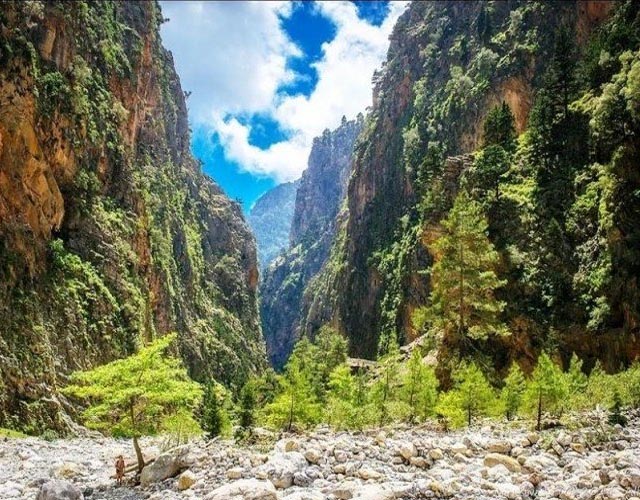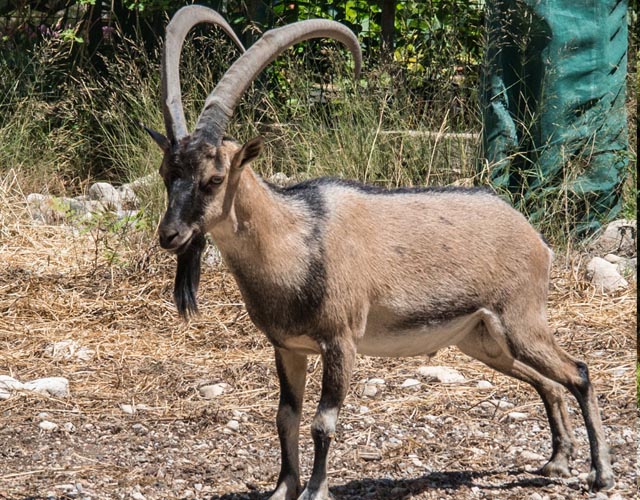1. Knossos - Heraklion
The centre of Minoan civilisation and capital of Minoan Crete lay 5km south of Heraklion.
Knossos flourished for approximately two thousand years. It had large palace buildings, extensive workshop installations and luxurious rock-cut cave and tholos tombs. As a major centre of trade and the economy, Knossos maintained ties with the majority of cities in the Eastern Mediterranean.
Wealth accumulation and the advancement of an urban lifestyle were the hallmarks of this zenith, which began circa 2000 BC and was typified by magnificent monumental buildings and a complex social structure.
The Minoan palace is the main site of interest at Knossos, an important city in antiquity, which was inhabited continuously from the Neolithic period until the 5th c. AD. The palace was built on the Kephala hill and had easy access to the sea and the Cretan interior. According to tradition, it was the seat of the wise king Minos. The Palace of Knossos is connected with thrilling legends, such as the myth of the Labyrinth, with the Minotaur, and the story of Daidalos and Ikaros.
Source: https://www.heraklion.gr/en/visitor/knossos/knossos.html
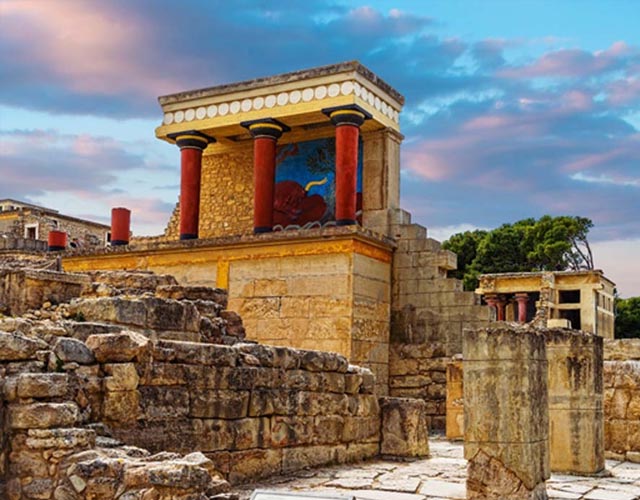
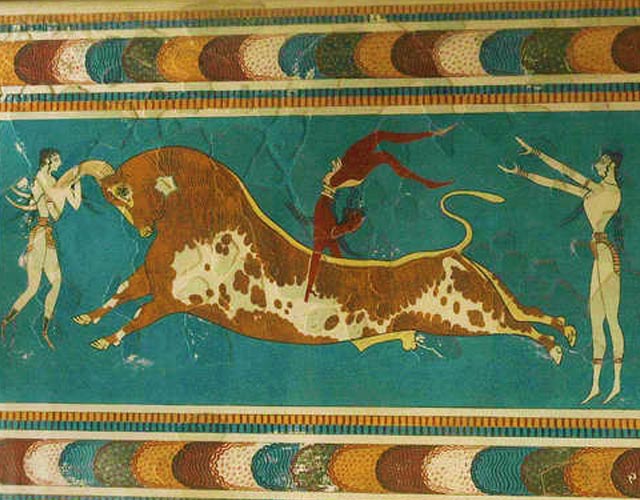
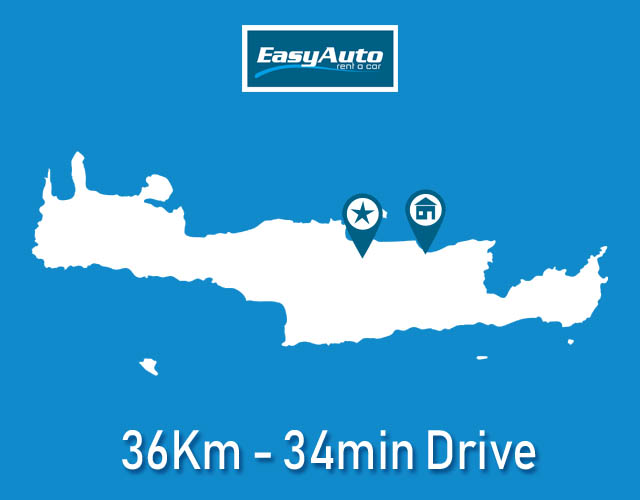
2. Chryssi Island - Ierapetra
The island of Chrissi (or Gaidouronisi) is situated approximately 9 nautical miles south of Ierapetra. Due to its incredible natural beauty and important ecosystem, it has been included in the European initiative NATURA 2000. It has an area of 4,743 square kilometers, and a maximum altitude of 27 meters. It’s an islet known for its exotic waters in all the shades of blue and green, the golden beaches -where it got its name from-, and the protected forest with the cedar trees, which are over 200 years old. Chrissi is a piece of paradise on earth, the southernmost natural park of Europe, and a gem in the Mediterranean.
With soft music playing in the background, we will be sailing in the emerald waters of the Libyan Sea, accompanied by seagulls and dolphins. The trip from the port of Ierapetra to the exotic Chrissi lasts about an hour. The self-service bar of the ship shall remain open throughout the cruise, offering light meals, with salads, wine, soft drinks, coffee, ice creams, etc.
We will anchor in the south side of the island, and its only port. The nearby beach is ideal for swimming and relaxation under the umbrellas. At the point of disembarkation there is a path that goes through the cedar forest and ends up in an exotic beach with thousands of shells, name Belegrina or Chrissi Ammos.
The cedar forest extends to the center of Chrissi, covering an area of 350,000 square meters, which is about 1/4th of the island, with an average of 14 trees per 1,000 square meters, and average age of trees 200-300 years. Those trees is a rare variety of Lebanon cedars, 1 meter tall, and with a diameter of up to 1 meter. The cedars have a root system that develops at a radius of at least double their height. Except from their large roots, they also develop a network of thinner ones that form a thick mesh that withholds the sand. The path through the forest and the dunes is simply magical.
The colors of the rocks, which are mainly grey-green, reddish-brown, black, etc., are spectacular, while almost the entire island is covered by golden sand. The base rocks of Chrissi were created through the solidification of lava that poured out of an undersea volcano millions of years ago. The 49 species of fossils (corals, shells, barnacles, urchins) found on the island come from the sea. They were imprinted on the volcanic rocks 350,000-70,000 years ago, when Chrissi was still underwater. The northern shores (Belegrina, Hatzivolakas, Kataprosopo) are filled with shells. Especially on the east side of the northern beach, the amount of shells is so big that the view is overwhelming.
Source: https://daytrip4u.com/tour/ierapetra-to-chrissi-island-a-unique-cruise-in-crete/144830

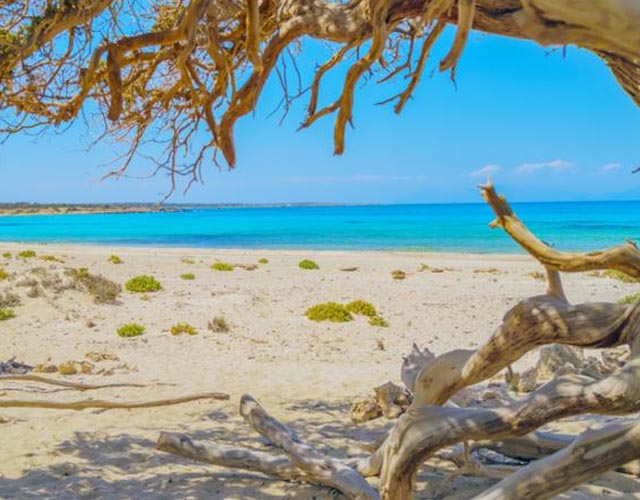
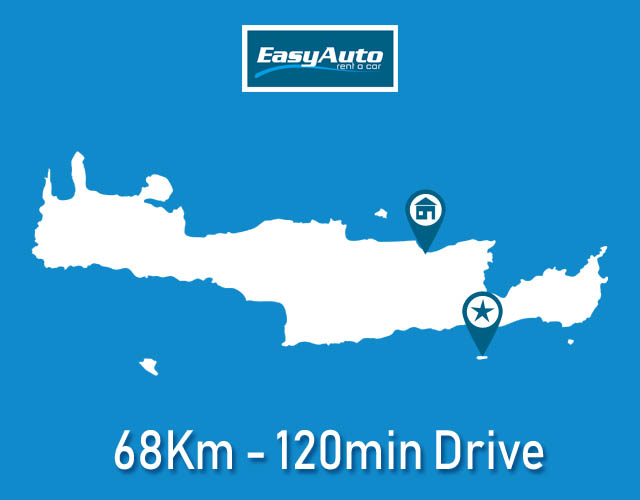
3. Spinalonga - Elounda
Spinalonga is a small island near Elounda in East Crete. Spinalonga is also known as the Leper Island, as that is where lepers from Crete and the rest of Greece were quarantined until 1957.
Today thousands of tourists visit Spinalonga each summer by boat from Agios Nikolaos, Elounda and Plaka, for a tour of its ruined buildings, which the Archaeological Service is laboriously trying to maintain.
The strategic position of the rocky islet for the control and defence of Elounda harbour could not but mark Spinalonga with a turbulent history of fierce battles and much human suffering.
To get to Spinalonga you must take the boat from Agios Nikolaos, Elounda or Plaka.
Boats depart from Agios Nikolaos in the morning. Apart from the trip to Spinalonga, they also offer lunch and the opportunity for a swim off the beaches behind the Kolokytha Peninsula, before returning to Agios Nikolaos in the afternoon.
From Elounda harbour, there is a boat to Spinalonga every 30 minutes throughout the summer. It takes about 20 minutes to reach the island, while the sea voyage sometimes includes a sail around the Kolokytha Peninsula.
There are also boats from the little village of Plaka just north of Elounda. The trip from here is shorter, taking about 7 minutes, as Plaka is directly opposite Spinalonga.
Source: https://herakliontransfers.com/en/tours-in-spinalonga.php

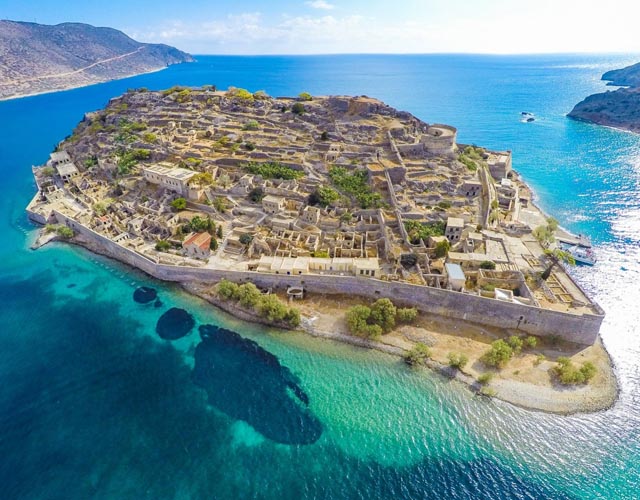

4. Vai Palm Beach - Sitia
Vai, or more specifically the palm forest of Vai, is one of the most popular sights in Crete and one of the most beautiful and special places in the whole Mediterranean.
Vai draws thousands of visitors each year. They come not only for its wonderful palm forest, but also for the large sandy beach spread out at its foot.
Vai is located 24 km east of Sitia and about 6 km from Palaikastro. The road from Sitia is generally good and you will have no trouble negotiating it.
Sitia is about 2 hours’ drive from Heraklion, and Vai is another 30 minutes further. From Sitia, take the road to Moni Toplou (Toplou Monastery) and continue another 8 km past the monastery to the palm forest.
If you are coming from Rethymno, it will take you 4 hours to get to Vai, while it is 4.5-5 hours’ drive from Chania.
Shortly after Vai is ancient Itanos or Erimoupoli, where excavations have brought many finds of the Minoan and Hellenistic periods to light. It’s worth stopping here if you’re not in a hurry.
Vai beach has fine golden sand and pebbles at its north end. You can leave your car in the car park behind the forest, which costs 2.5 euros (2009 prices).
The beach is 200 m from the parking area and is fenced, as is the forest, in an attempt to protect the area. The beach is fully organised, with sun loungers, straw umbrellas and wooden walkways for easy access. It costs 6 euros to rent an umbrella and lounger, but the palm trees offer free shade to anyone quick enough to spread their towel underneath.
Naturally such a popular place as Vai has thousands of visitors each summer. If you come in July and August, be prepared for the crowds. If, on the other hand, you visit Vai at the beginning or end of the tourist season, you will enjoy the scenery and sea far more.
At the side of the beach, near the steps to the viewing platform, is a restaurant and a cafeteria with chairs and tables set out in a pretty, flat space among the palm trees.
The cafeteria is the only one near the beach, and its prices are normal for Crete in spite of the fact that it has a virtual monopoly. There are also toilets on the beach and outdoor showers for washing off the salt after your swim.
You can also try watersports at Vai, including banana boat, jet-skiing and wakeboarding.
If you feel like a walk, climb the steps at the side of the beach to the viewing platform, which offers a panoramic view of the whole area and the beautiful palm forest of Vai. Here you can take wonderful pictures and see the small neighbouring beach, 5 minutes’ walk north of Vai.
If you decide to go for a walk in the palm forest, you will see - if you’re lucky - a small lake formed by rainwater among the trees. This phenomenon is more frequent in early summer or in September
Source: http://www.explorecrete.com/crete-east/EN-Vai.html
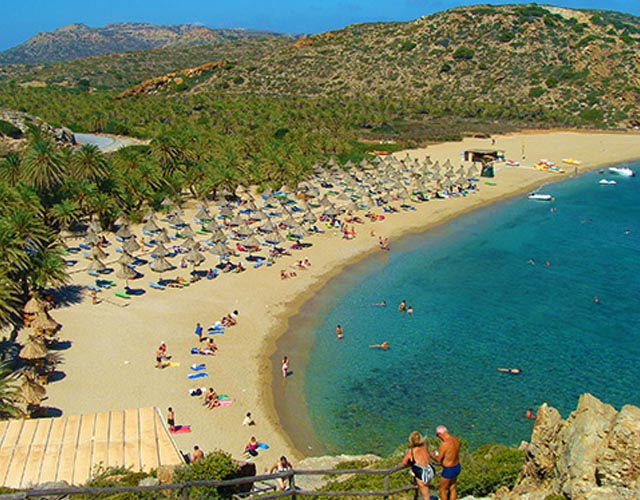


5. Zeus Cave - Lassithi
The Dikteon Cave (or Dikteon Andron or Dictaean Cave) is one of the most important and famous of the 3,000 caves in Crete and the 8,500 in Greece.
It is in the impressive Dikteon Cave, rich in stalagmites and stalactites, that Zeus was born according to legend. This is why the Dikteon Cave was already famous in antiquity, dedicated to the worship of the greatest of the gods, as the many offerings found there indicate.
In our days the Dikteon Cave continues to receive many visitors, no longer worshippers, of course, but travellers from all over the world.
The Dikteon Cave is found in the Mount Dicte range in East Crete, on the Lassithi Plateau.
The Lassithi Plateau was inhabited as early as the Neolithic Period (6000 BC) and is one of the few sites in the Mediterranean where settlements arose at such high altitude (an average of 840 m. above sea level). An important factor was that the Lassithi Plateau has particularly fertile soil, and large amounts of water from the snow that falls on the peaks of My Dicte collect in the water table.
To visit the Dikteon Cave you need to drive up to the Lassithi Plateau, which is near Neapoli, Malia, Stalida and Hersonissos. It is not many kilometres from these as the crow flies, but the road is winding and uphill, so you will need 45 minutes to an hour to reach the Lassithi Plateau and the village of Psychro.
The Dikteon Cave lies at an altitude of 1025 m. on the northern slopes of Mount Dicte, which dominates the Lassithi Plateau and the whole of East Crete. The cave is near the village of Psychro, which is why it is also known as Psychro Cave.
From Psychro, follow the paved path with oak trees on either side. For the more adventurous, at the beginning of the path you will find donkeys to take you up to the Dikteon Cave. At the end of the short path, just before the cave entrance, it is worth stopping to catch your breath, enjoy the panoramic view of the whole plateau and draw into your lungs the refreshing mountain air, scented with thyme, sage and other local aromatic herbs. It’s a wonderful feeling, making you think it was no accident that the Dikteon Cave was chosen as the site of such an important event as the birth of Zeus, Father of the Gods of Olympus.
Source: http://www.explorecrete.com/archaeology/dikteon-andron-cave.html
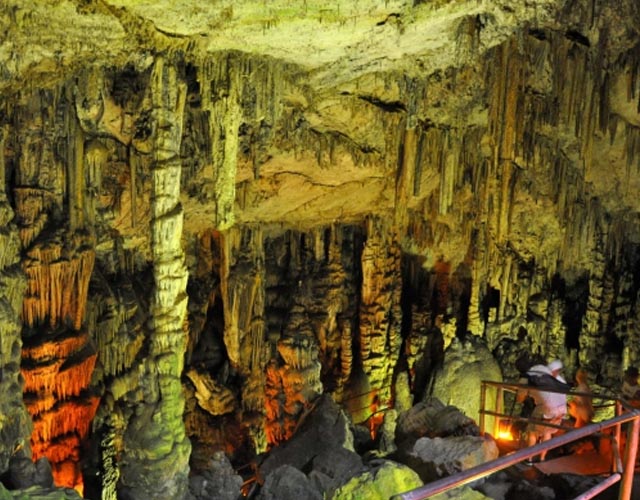
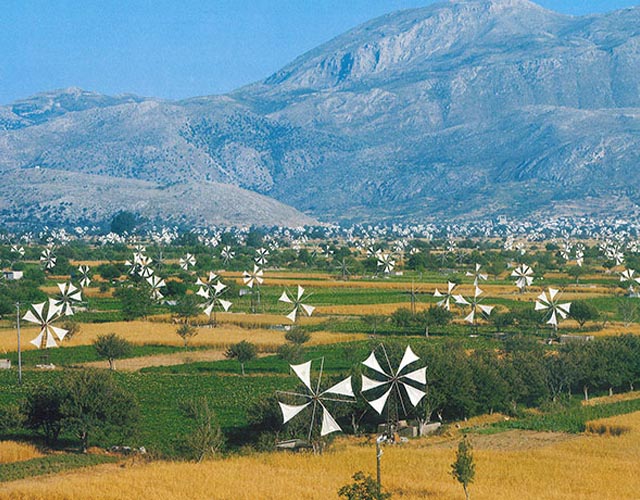
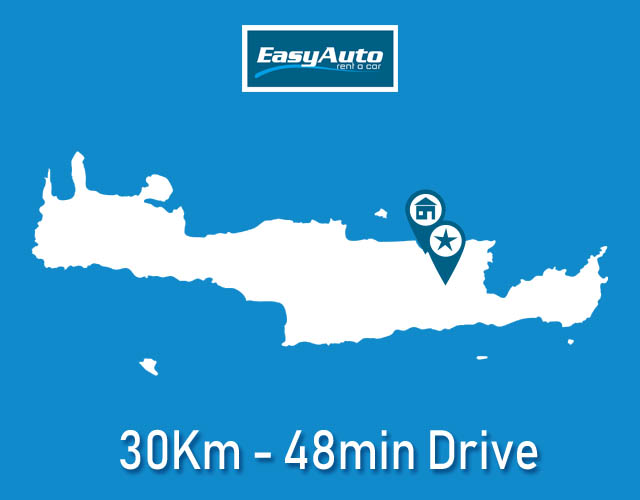
6. Matala - South Crete
Matala is a seaside village in south Crete, near Phaistos, the second-largest Minoan Palace in Crete.
Matala became famous in the Sixties, when hippies came here from all over the world to live in the celebrated caves of Matala, next to the beach.
Matala is ideal for those who want to spend their holidays near lovely beaches, large archaeological sites and many villages which retain their traditional atmosphere.
Matala itself has lost most of its traditional colour, but traditional villages such as Sivas and Kamilari are nearby, with many more waiting to be discovered within a 20-kilometre radius.
Matala is not the place for wild nightlife and fun, but there are several bars where you can have a drink and listen to music by the sea.
For those who are interested in Cretan history, Phaistos (Minoan Palace), Agia Triada (Minoan Villa) and the ancient city of Gortys are very close to Matala.
Matala has a wonderful beach, while nearby are the beaches of Kokkini Ammos and Kommos.
The road to Matala is extremely good, with a tarmac surface and decent signposting. You are, after all, heading to one of the major tourist resorts of Crete
Source: http://www.explorecrete.com/crete-east/EN-Matala.html
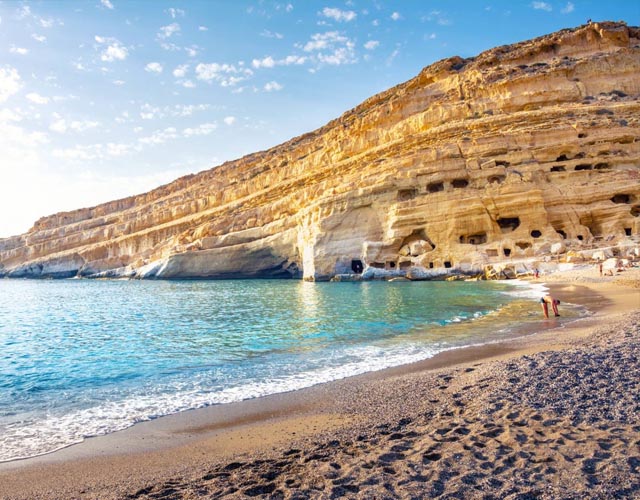
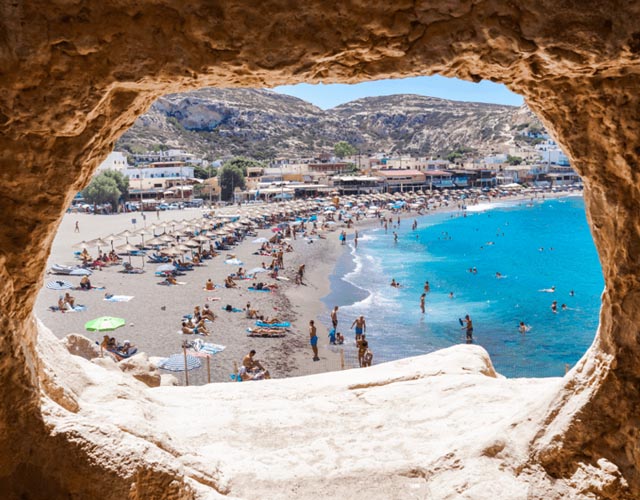

7. Samaria - Chania
Samaria or the Samaria Gorge is one of the main sights of Crete. Every tourist who visits Crete will have heard of this beautiful gorge or soon will. The locals call it the “Farangas” or “Great Gorge”, both in admiration at its beauty and to differentiate it from the many other, smaller gorges of Crete.
The Samaria Gorge is in west Crete, in the White Mountains. It is the longest gorge in Europe, with a length of 18 kilometres.
The gorge starts at Xyloskalo (1227 m. above sea level) on the Omalos Plateau and runs down to the seaside village of Agia Roumeli on the south coast of Crete.
The Samaria National Park is exceptionally rich in plant and animal life. In the gorge you will find unique species protected under international law.
It is said that there are 450 plant species in the gorge, and not a single flower may be removed from Samaria, by law. Don’t see this as a pointlessly strict rule, but as the only way to protect the delicate ecosystem of Samaria so that thousands of visitors can continue to enjoy it each year.
In Samaria you can admire the forests of huge pine and cypress trees, a picture from Crete’s past, when thekri-kri, the wildgoats of Crete inside Samaria gorge island was covered by forests famous for their timber, ideal for building strong ships.
Inside the gorge you may even meet its famous inhabitants, the wild goats of Crete, which the locals call “agrimia” and tourists call “kri-kri”.
The Cretan wild goat is endemic to Crete and you will probably see some in the village of Samaria, as they often approach the houses at the edge of the village
Samaria is not a simple stroll for those unused to walking.
Anyone can go down the gorge, as long as they have no serious medical problems, but you must be prepared for very stiff legs the next day.
A good pair of hiking shoes is a must, as well as sunblock and a hat.
The most tiring part of the walk is the last 3 km before the exit from the National Park. Here there is often another ticket control to make sure no-one is left in the gorge overnight, either because they have had an accident or because they want to.
The landscape at the exit from the gorge is dry and arid with no shade. If you have started your walk in the early morning, you will reach this point in the early afternoon, when the heat of the day is more obvious.
Be patient, because just another hour’s walk away is Agia Roumeli with its inviting beach.
Source: http://www.explorecrete.com/hiking/samaria.html
